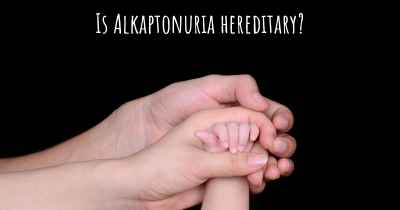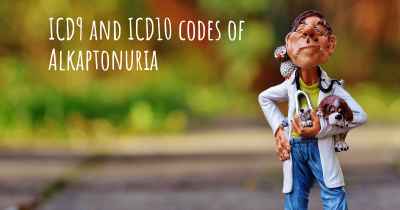What is the history of Alkaptonuria?
When was Alkaptonuria discovered? What is the story of this discovery? Was it coincidence or not?

Alkaptonuria is a rare genetic disorder that affects the body's ability to break down certain amino acids. It is characterized by the accumulation of a substance called homogentisic acid in the body, which can lead to a variety of symptoms and complications.
The history of Alkaptonuria dates back to the early 1900s when the condition was first described by Sir Archibald Garrod, a British physician and pioneer in the field of inborn errors of metabolism. Garrod noticed that some individuals had urine that turned dark upon exposure to air, and he hypothesized that this discoloration was due to the presence of a substance that was not properly metabolized.
Garrod's observations led him to propose the concept of "inborn errors of metabolism," which suggested that certain diseases were caused by genetic defects that affected the body's ability to process specific substances. Alkaptonuria was one of the first disorders to be identified as an inborn error of metabolism.
Over the years, researchers made significant progress in understanding the underlying genetics of Alkaptonuria. In the 1950s, it was discovered that the condition is inherited in an autosomal recessive manner, meaning that an affected individual must inherit two copies of the defective gene, one from each parent.
The gene responsible for Alkaptonuria was identified in 1996 by researchers at the University of Cambridge. They found that the condition is caused by mutations in the HGD gene, which provides instructions for producing an enzyme called homogentisate 1,2-dioxygenase. This enzyme is involved in the breakdown of homogentisic acid, and mutations in the HGD gene result in a non-functional or reduced-functioning enzyme.
Alkaptonuria is a relatively rare disorder, with an estimated prevalence of 1 in 250,000 to 1 in 1,000,000 individuals worldwide. It affects both males and females equally and can be found in all ethnic groups.
Symptoms
The most notable symptom of Alkaptonuria is the darkening of urine upon exposure to air. This discoloration is caused by the presence of homogentisic acid, which oxidizes and turns dark when exposed to oxygen. However, this symptom is not always present, and individuals may not notice any changes in their urine color.
Another characteristic feature of Alkaptonuria is the accumulation of homogentisic acid in various tissues throughout the body. Over time, this can lead to a condition called ochronosis, which is characterized by the deposition of a dark pigment in connective tissues such as cartilage, tendons, and skin. Ochronosis can cause joint stiffness and pain, leading to arthritis-like symptoms.
While the symptoms of Alkaptonuria typically appear in adulthood, some individuals may experience milder symptoms or remain asymptomatic throughout their lives. The severity of the condition can vary widely between individuals, even within the same family.
Treatment and Management
Currently, there is no cure for Alkaptonuria. Treatment primarily focuses on managing symptoms and preventing complications. Regular monitoring of joint function and mobility is important to detect and address any issues early on.
Physical therapy and exercise can help maintain joint flexibility and reduce pain. Nonsteroidal anti-inflammatory drugs (NSAIDs) may be prescribed to alleviate inflammation and manage pain. In severe cases, joint replacement surgery may be necessary to improve mobility and quality of life.
Genetic counseling is recommended for individuals with Alkaptonuria and their families. This can help individuals understand the inheritance pattern of the condition and make informed decisions about family planning.
Conclusion
Alkaptonuria has a rich history in the field of genetics and metabolic disorders. From its initial description by Sir Archibald Garrod to the identification of the underlying genetic cause, researchers have made significant strides in understanding this rare condition. While there is currently no cure, ongoing research and advancements in treatment options offer hope for improved management and quality of life for individuals with Alkaptonuria.
Copied from Wikipedia
https://en.m.wikipedia.org/wiki/Alkaptonuria
Posted Jun 15, 2017 by Shane 2255
Posted Sep 27, 2017 by Sandra 2000
Posted May 18, 2017 by Marcelah38 2365








